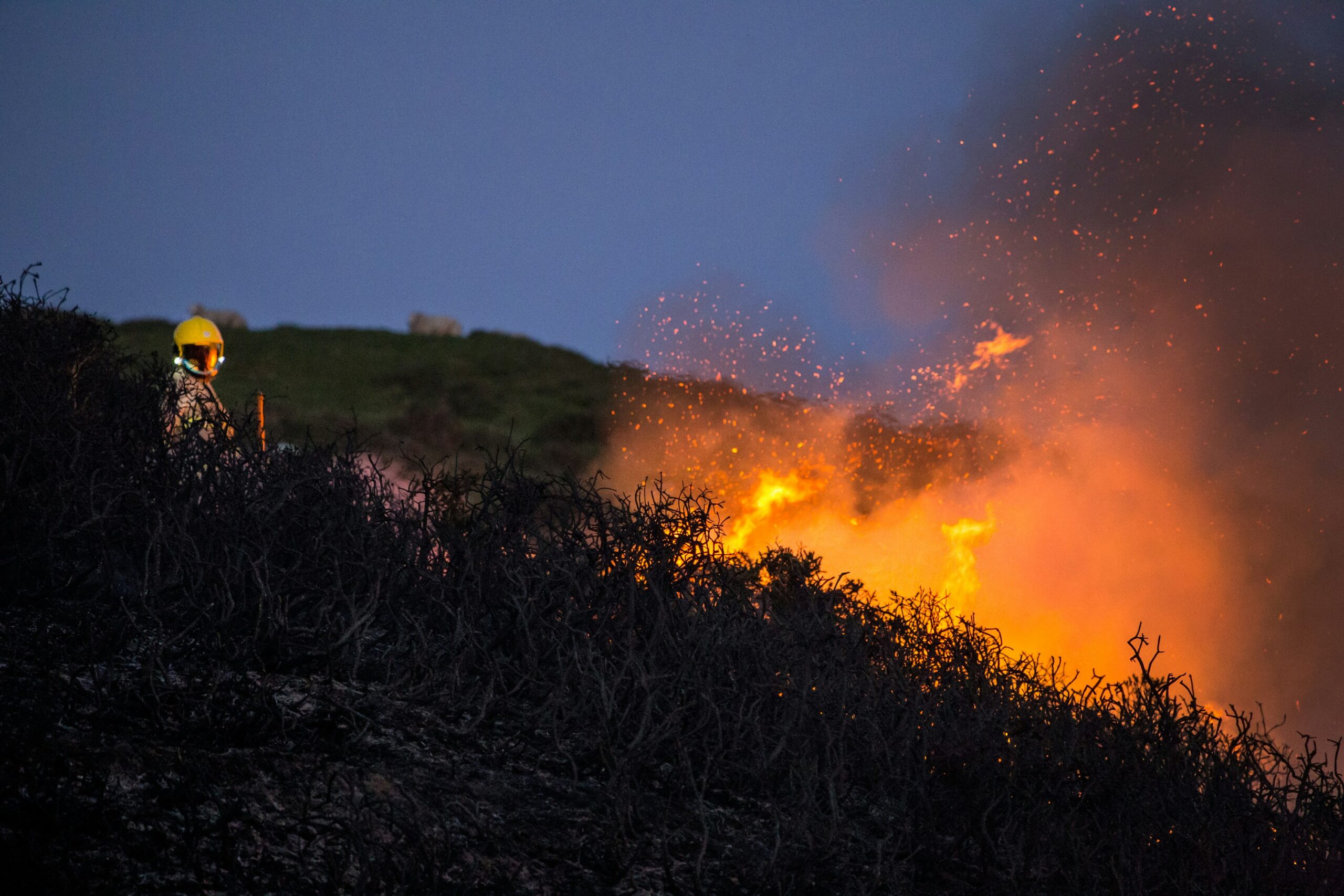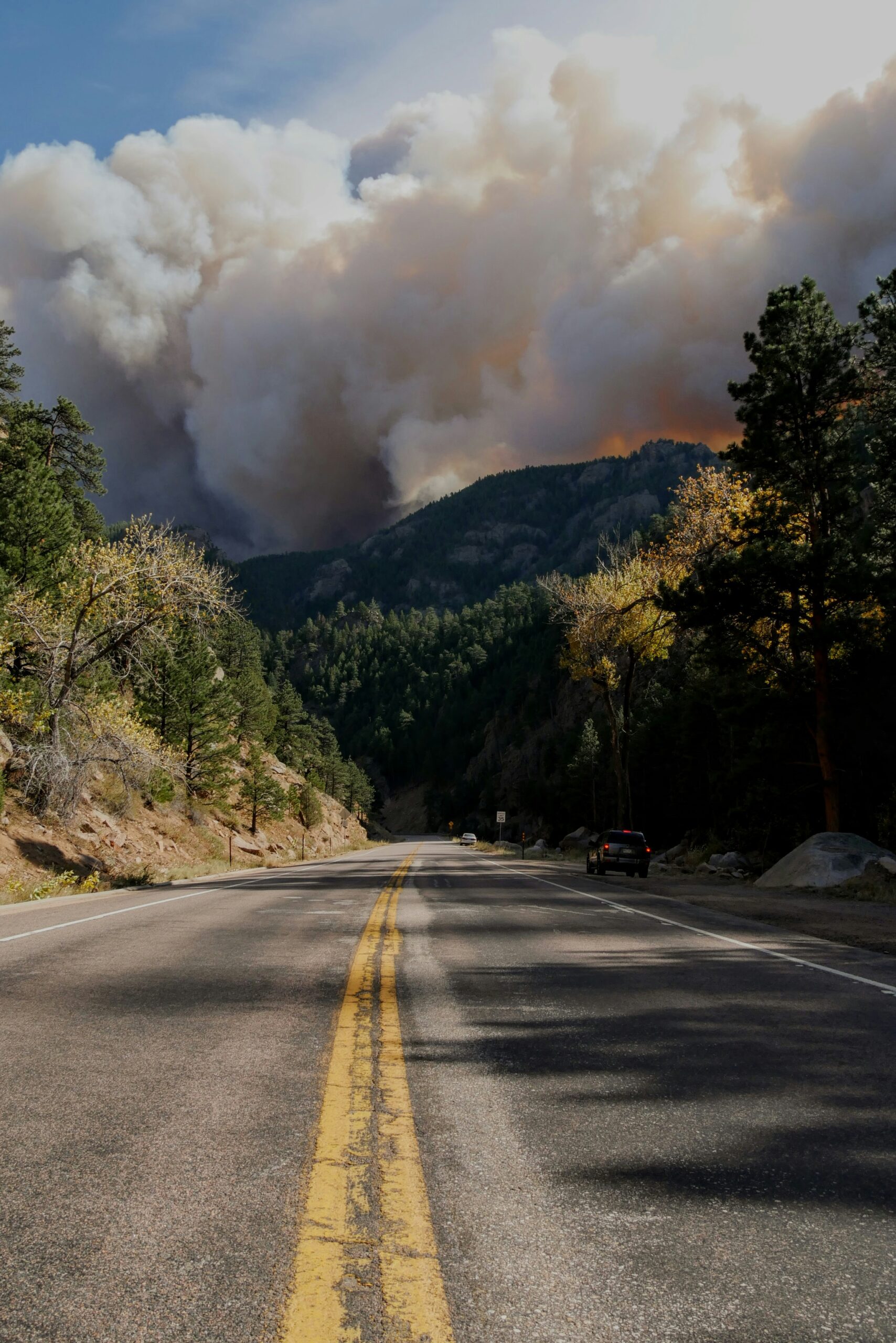Introduction to the Dunsborough Fire
The Dunsborough fire has emerged as a critical incident affecting the local community and environment of Dunsborough, a picturesque coastal town located in the southwest of Western Australia. Known for its stunning beaches and natural reserves, Dunsborough not only attracts tourists but also serves as a vital habitat for various wildlife species. However, the current situation surrounding the Dunsborough fire poses significant challenges to both residents and the ecology of the area. The burgeoning blaze has prompted urgent action from local authorities and emergency services, showcasing the community’s determination to safeguard its cherished landscapes.
The fire outbreak in Dunsborough was primarily triggered by unusually dry weather conditions, combined with a series of extreme heat events that have plagued the region in recent months. The combination of these environmental factors created a perfect storm for wildfires to ignite and spread rapidly. Starting from smaller controlled burns in the region, the fire quickly escalated as winds shifted, exacerbating the situation. This escalation caught both residents and emergency services off guard, prompting swift responses to contain the blaze and protect vulnerable areas and properties.
Local authorities, including the Department of Fire and Emergency Services (DFES), have mobilized resources and deployed firefighting teams to manage the blaze effectively. The call to action was immediate, prioritizing the safety of residents and minimizing the fire’s impact on infrastructural assets. Evacuation orders were issued for the most affected areas, and community notifications were circulated through various channels to keep the public informed. These efforts reflect the significance of coordinated emergency response initiatives in mitigating the devastating effects of wildfires in this beautiful yet vulnerable region.
Timeline of Events
The Dunsborough fire, a significant environmental incident, saw a series of critical events unfold that warrant thorough documentation. The fire was first reported on January 15, 2023, during an unusually dry period, raising immediate concerns among local authorities. Initial assessments indicated that the area was at a high risk for wildfires, prompting preemptive measures by emergency services.
By January 16, the fire had rapidly spread, forcing the invocation of emergency response protocols. Firefighting teams, including both local and volunteer brigades, were mobilized to tackle the burgeoning blaze. The Western Australia Department of Fire and Emergency Services (DFES) coordinated efforts to establish containment lines. Residents in nearby areas received alerts, emphasizing the need for evacuation and safety precautions.
On January 18, significant changes in wind direction escalated the fire’s intensity, resulting in the deployment of aerial firefighting resources. The aerial units conducted water drops to assist ground crews in controlling the fire’s spread. This pivotal moment was critical, as it marked the first instance of large-scale aerial support in the incident, signaling an escalation in firefighting efforts.
As the situation developed, by January 21, monitoring teams reported that the fire had engulfed over 3,000 hectares, prompting additional resources from neighboring regions. Community meetings were held to update residents on the evolving situation, reinforcing the importance of collective vigilance and adherence to safety protocols.
By the end of January, the fire was largely contained, although hotspots remained a concern. Fire services began rehabilitating affected areas, implementing risk reduction strategies to prevent future incidents. This event has significantly impacted the local ecosystem, and discussions about recovery and rebuilding efforts are ongoing. The Dunsborough fire serves as a somber reminder of the increasing frequency and severity of wildfires. In conclusion, understanding the timeline of events surrounding the Dunsborough fire is fundamental in grasping the extensive emergency management efforts involved in such significant incidents.
Causes of the Dunsborough Fire
The Dunsborough fire has garnered significant attention due to its rapid escalation and the extensive damage it has caused. Understanding the potential causes of this event is essential for both immediate response and future prevention strategies. Primarily, the fire’s origins can be attributed to a combination of natural factors and human activities that collectively created an environment conducive to wildfire spread.
Weather conditions play a critical role in the ignition and propagation of fires. The region has experienced unusually high temperatures and low humidity levels, which can lead to dry vegetation. In Dunsborough, these climatic conditions have been exacerbated by prolonged periods of drought, creating a landscape rife for ignition. Dry leaves and grasses not only catch fire easily but also facilitate the rapid spread of flames across larger areas. Furthermore, strong winds can carry embers, igniting new fires far from the original source.
In addition to natural elements, human activities significantly contribute to the risk of fires. Instances of campfires left unattended, discarded cigarettes, and the improper use of fireworks can easily spark a wildfire, particularly in a dry environment. Moreover, urban development encroaching on natural landscapes can increase the likelihood of human-wildfire interactions. The increasing frequency of such events highlights the importance of responsible behavior and adherence to fire restrictions during high-risk periods.
Climate change is another factor influencing the frequency and intensity of wildfires across the globe, including Dunsborough. Rising temperatures and shifting weather patterns can lead to longer and harsher fire seasons, increasing both the likelihood and severity of such incidents. The interplay between climatic conditions and human practices creates a complex web of causes that continue to challenge fire management efforts in the region.
Impact on the Community
The Dunsborough fire has significantly affected the local community, leading to widespread concern about both immediate damages and longer-term repercussions. Residents were issued evacuation orders as flames approached residential areas, forcing families to leave their homes unexpectedly. This abrupt evacuation caused not only logistical challenges but also a profound sense of anxiety and uncertainty among the population.
Property damage from the fire has been considerable, with numerous homes and businesses suffering extensive losses. Reports indicate that some families have lost everything, while local enterprises face financial struggle due to damage and reduced patronage stemming from the crisis. Many businesses in Dunsborough, which rely on tourism and local foot traffic, are experiencing a severe decline in customers as residents prioritize safety. This economic impact will likely linger even after the fire is contained, creating an ongoing challenge for local commerce and livelihood.
The disruption to daily life extends beyond the immediate physical damages. Residents expressed feelings of isolation and distress as community gatherings and regular activities have been interrupted. The emotional toll is evident as individuals navigate stress, anxiety, and trauma related to the event. Local mental health services are becoming increasingly vital in providing support to those affected, ensuring that residents can process their experiences with the help of professionals.
Testimonials from community members underscore the resilient spirit of Dunsborough, with many individuals expressing gratitude for emergency services while also lamenting the destruction. Community gatherings and fundraising initiatives are emerging as ways for residents to come together, fostering a sense of solidarity in these challenging times. Overall, the impact of the Dunsborough fire on the community is profound, affecting physical safety, economic stability, and emotional well-being.
Emergency Response and Firefighting Efforts
The response to the Dunsborough fire has involved a coordinated effort from multiple emergency services and agencies dedicated to mitigating its impact. Firefighting strategies have been implemented based on real-time assessments of the evolving situation on the ground. Local fire brigades, supported by state and federal resources, have mobilized personnel and equipment to combat the flames. Key resources deployed consist of aerial firefighting units, ground crews, and specialized equipment designed for rugged terrain and difficult weather conditions.
One of the critical challenges faced by firefighters in Dunsborough has been the rugged terrain, which complicates access to various hotspots. The steep and uneven landscape can hinder the movement of firefighting vehicles and personnel, making it essential to utilize helicopters for aerial water drops. These air support efforts are vital in reaching areas that are otherwise inaccessible and help to contain spreading fires effectively. Moreover, the unpredictable weather has created an additional layer of complexity, with sudden changes in wind direction and intensity posing serious risks to both firefighters and the surrounding community.
In response to these challenges, innovative methods and technologies have been employed. Drones equipped with infrared cameras are being used to identify heat hotspots, allowing firefighters to prioritize and strategize their attack effectively. This technology dramatically improves situational awareness and helps in allocating resources efficiently. Furthermore, inter-agency coordination has been essential, with local fire departments working alongside state wildfire management teams, police, and emergency medical services to ensure a comprehensive firefighting strategy.
By maintaining open lines of communication and sharing resources, these agencies aim to enhance their collective firefighting capabilities. The concerted efforts from all involved highlight a commitment to preserving the safety of both the Dunsborough community and the natural environment impacted by the blaze.
Environmental Consequences
The recent Dunsborough fire has resulted in significant environmental consequences that warrant serious attention. Local ecosystems have suffered considerable damage, with many native plant species either destroyed or severely compromised. The fire has burned through vital habitats that are crucial for various flora and fauna, disrupting the delicate balance of the region’s biodiversity. Endemic species, particularly those adapted to the specific climatic and soil conditions of Dunsborough, face increased vulnerability. Loss of habitat can lead to decreased populations or, in extreme cases, local extinctions.
Wildlife has also been profoundly affected. Many animals, including marsupials and bird species that rely on the specific habitats found in Dunsborough, have been forced to flee their natural surroundings, leading to increased competition for resources in the remaining intact areas. The fire can result in both immediate and long-term effects on wildlife populations, as the loss of shelter and food sources can disrupt breeding patterns and juvenile survival rates. Furthermore, the increased risk of predation in unfamiliar areas poses an additional threat to the displaced fauna.
Air quality has emerged as another pressing concern in the aftermath of the fire. The release of smoke and particulate matter can compromise air quality, affecting human health and contributing to respiratory issues among residents. The smoke can also drift to neighboring areas, extending the impact beyond Dunsborough and raising concerns about pollution. This is particularly troubling for sensitive populations, including children and those with pre-existing health conditions.
Moving forward, the Dunsborough fire emphasizes the necessity for proactive land management and conservation efforts. Strategies must be developed to mitigate the risks of future fires while simultaneously promoting the recovery of affected ecosystems. It is vital for local authorities and conservationists to collaborate, ensuring that sustainable practices are implemented to restore not only the damaged landscapes but also the vital ecological functions they provide.
Recovery and Support Initiatives
The aftermath of the Dunsborough fire has prompted extensive recovery efforts aimed at assisting affected residents and restoring the community. In the initial response phase, local and state government agencies mobilized quickly, establishing crisis centers to provide immediate shelter and basic necessities. These centers served as a focal point for the distribution of food, water, and personal care items to those directly impacted by the fire.
In the subsequent months, the focus has shifted toward longer-term recovery initiatives, which encompass both individual support and community rebuilding efforts. Financial assistance programs have been instituted to help residents recover from the economic impact of the fire, with grants and low-interest loans offered to homeowners and businesses needing to rebuild or repair their properties. Additionally, the state government has allocated funds specifically for infrastructure restoration, ensuring the rehabilitation of essential services like water, electricity, and roadways, which were severely compromised during the incident.
Community organizations have also played a vital role in these recovery efforts. Various local non-profits have initiated fundraising campaigns and volunteer programs to support neighbors in need. This community-driven approach fosters unity and collective resilience, allowing individuals to share resources and emotional support throughout the recovery process. Mental health resources have been prioritized as well, with counseling services and support groups available to address the psychological toll that such disasters impose on individuals and families.
In summary, the response to the Dunsborough fire highlights a multifaceted approach to recovery, involving government agencies, community organizations, and residents themselves. By working collaboratively, these stakeholders are laying the groundwork for a resilient recovery that not only addresses immediate needs but also prioritizes long-term community wellness and environmental restoration.
Preventative Measures and Future Preparedness
In light of the ongoing fire situation in Dunsborough, it is essential to focus on preventative measures and strategies for future preparedness. The recent events have underscored the importance of adopting comprehensive fire risk reduction practices to safeguard the community. One significant lesson drawn from the current incident has been the imperative need for community education programs. Such initiatives play a pivotal role in informing residents about fire safety, creating awareness about the dangers posed by bushfires, and promoting proactive measures such as maintaining defensible spaces around properties.
Moreover, regular maintenance of firebreaks constitutes a critical component of fire prevention. Firebreaks act as barriers designed to slow or halt the progression of wildfires. It is essential for local authorities and volunteer firefighting groups to engage in systematic maintenance work to ensure that these breaks remain effective. This involves clearing vegetation, maintaining access roads, and regularly assessing the firebreaks’ effectiveness in mitigating fire spread.
Additionally, local government policies are instrumental in guiding fire prevention efforts. Stringent land-use planning and regulations can significantly lower wildfire risks. For example, enforcing building codes that require fire-resistant materials in new developments is one way to minimize potential damage. The integration of fire risk assessments into planning processes will provide a clearer understanding of vulnerable areas, ensuring targeted interventions take place.
Lastly, fostering community involvement through volunteer programs aimed at fire preparedness can enhance resilience. Initiatives that encourage residents to participate in local firefighter training workshops or community fire audits will not only improve individual readiness but also strengthen communal ties. Emphasizing collaborative effort will be crucial as Dunsborough prepares for the challenges posed by future fire events.
Conclusion and Call to Action
The Dunsborough fire incident marks a significant event, having not only impacted local landscapes and ecosystems but also weaving itself into the very fabric of the community. Throughout this blog post, we have explored the current situation surrounding the fire, the efforts being made to combat it, and the broader implications it has for both residents and wildlife in the area. Understanding the nuances of such a disaster is essential not only for immediate recovery but also for long-term community resilience and environmental sustainability.
As we reflect on the incident, it becomes clear that proactive measures are crucial in preventing future occurrences. The Dunsborough fire serves as a stark reminder of the vulnerability of our natural landscapes to the growing threat of bushfires, fueled by climate change and human activity. It emphasizes the importance of awareness and preparedness, as well as the urgent need for collaborative efforts among community members, local authorities, and wildlife organizations to restore what has been lost.
In the face of this challenging situation, we encourage readers to take active steps in supporting local recovery efforts. This can be achieved through donations, volunteering opportunities, or participating in community-driven initiatives that focus on fire prevention and environmental restoration. Engaging in educational programs about fire safety and the importance of preserving local ecosystems can empower individuals to contribute positively to safeguarding their community. By coming together and fostering a culture of resilience, we can mitigate the impacts of such disasters in the future.
In summary, the Dunsborough fire is not merely an isolated event but a call to action for all of us. Let us unite in our efforts, ensuring that the lessons learned lead to a stronger, safer community for generations to come.


